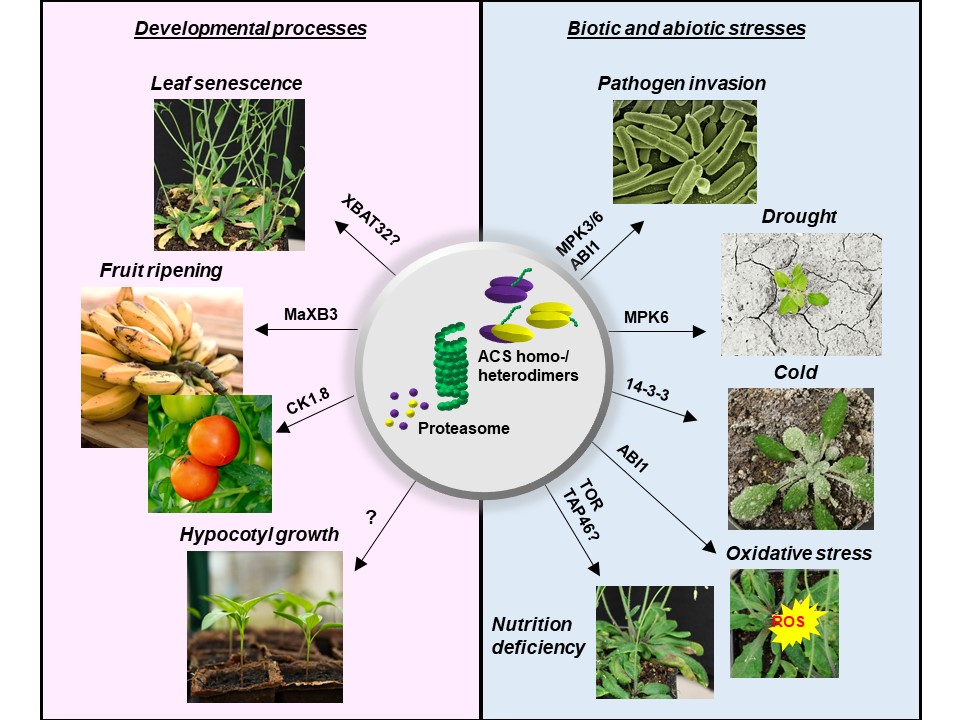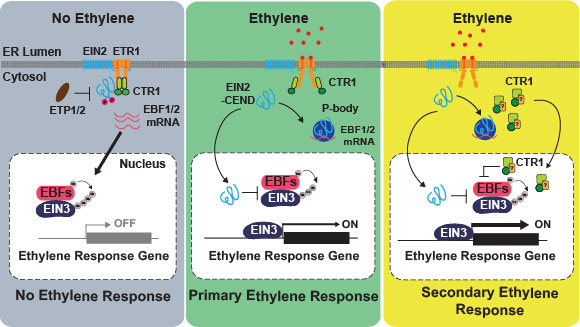Research
We investigate the mechanisms that regulate ethylene biosynthesis and ethylene signaling using a model plant, Arabidopsis thaliana. Through interdisciplinary approaches encompassing biochemistry, cell biology, genetics, and physiology, we aim to comprehend the regulation of ethylene biosynthesis and the modulation of the ethylene signaling pathway. Our research also focuses on how these processes enable adaptation to various stresses.
Research Projects
Ethylene biosynhtesis regulation
The precise regulation of ethylene biosynthesis is crucial for plants to adjust their growth during developmental transitions and in response to various stresses. ACC synthases (ACS), the key enzymes that regulate ethylene biosynthesis, play a central role in controlling how much ethylene is produced in plants. Plants accomplish this by differentially modulating the gene expression of ACS genes or the protein stability of ACS in different growth or stress conditions, thus enabling plants to produce optimal levels of ethylene as well as respond to stresses. In the Yoon lab, we seek to understand how the protein stability of ACS is regulated in different contexts of stress and its associated molecular and biochemical mechanisms.

The spatiotemporal regulation of ethylene signaling pathway
Plants are constantly exposed to various environmental threats, such as drought, and their ability to rapidly adapt is crucial for their survival. Changes in cellular dynamics, such as modulating the subcellular localization of signaling molecules between different compartments in cells, play a critical role in how plants respond to their surroundings. The ethylene signaling pathway is also strongly influenced by the spatiotemporal regulation of its signaling components to control its responses to different environmental stresses. Our group is pursuing several projects focused on investigating the mechanisms governing the spatiotemporal regulation of ethylene signaling molecules and their role in plant's responses to various stresses.

